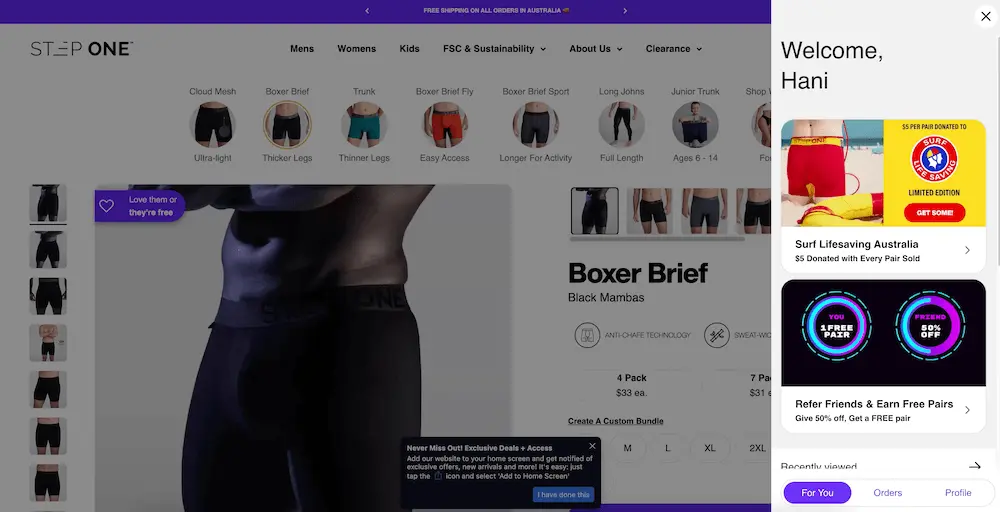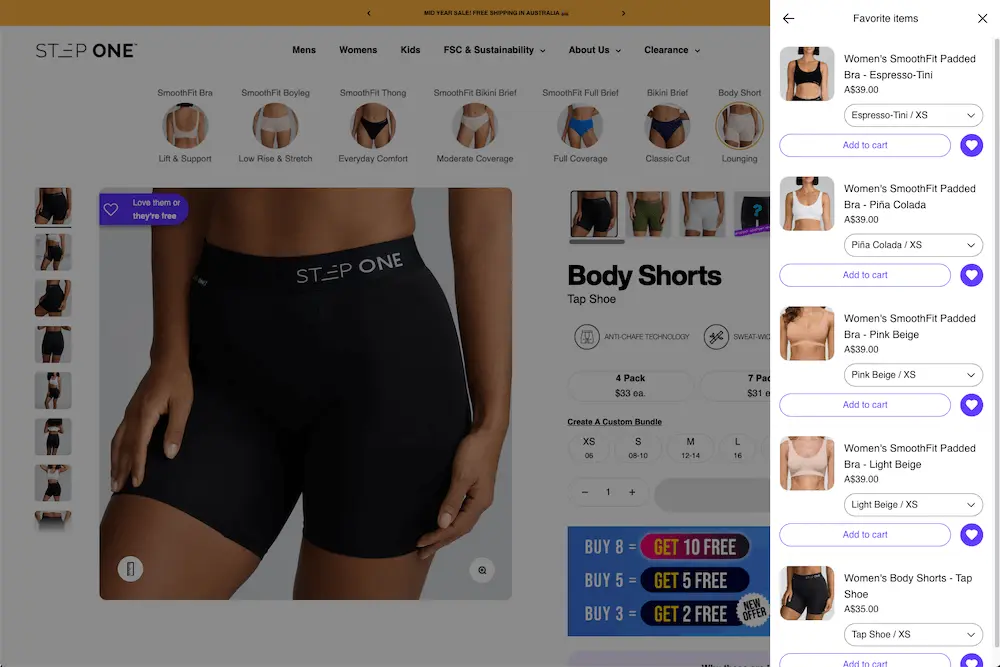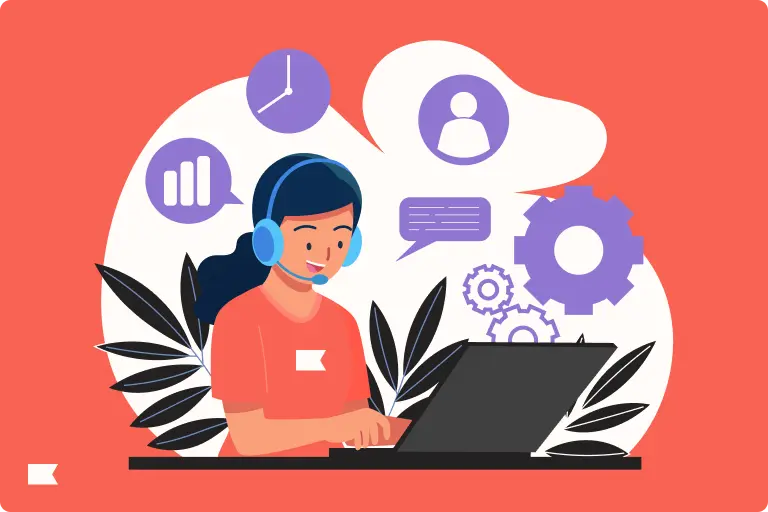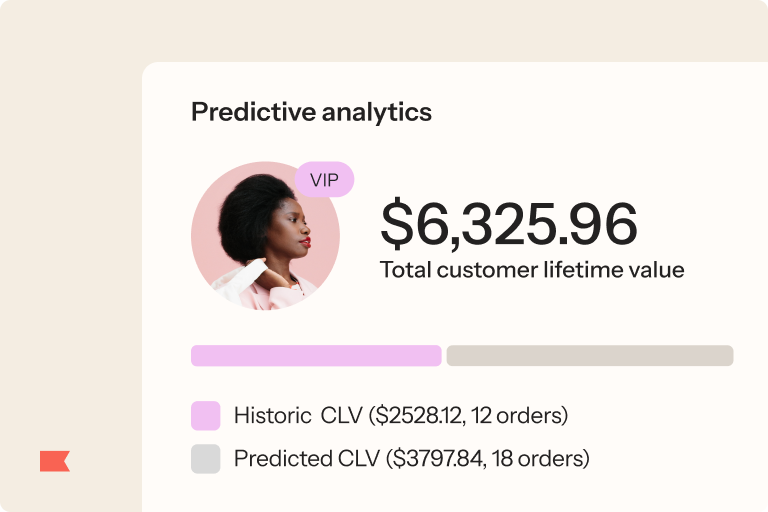3 reasons customers, marketers, + engineers all love Klaviyo Customer Hub

In my role as head of conversion rate optimization (CRO) and engineering at StepOne, a sustainable activewear brand based in Sydney, Australia, I’ve seen firsthand how technical solutions can solve real customer experience problems.
I’ve also seen the flip side of that coin: how a laundry list of custom integrations that a team doesn’t have the bandwidth to create can drain resources and hold the team back.
Features like account management, wishlists, recommended products, and authentication improvements are valuable. But they often end up at the bottom of the to-do list because there are always more linear revenue-driving opportunities that run the roadmap.
Klaviyo Customer Hub is a one-stop shop for shoppers to:
- Manage their account
- Track orders
- View favorites
- Get help
- See personalized recommendations
Now, brands get these features out of the box, without needing to build and maintain custom solutions.
It’s not that these features aren’t important—it’s that having them ready-made and integrated with your omnichannel marketing stack allows engineering teams to focus on their core projects, empowering marketers to use valuable customer data without extra help from engineering. This saves time and helps teams deliver a smoother, more personalized experience for every shopper.
Customer Hub addresses three critical pain points that have been plaguing ecommerce sites for years.
In this blog, I’ll walk you through how this tool is changing the game for both shoppers and businesses.
1. Everything your customers need in one place
The most immediate benefit of Customer Hub is creating what I call the “single pane of glass” experience. Instead of forcing customers to navigate between multiple account pages—orders here, marketing preferences there, support options somewhere else—Customer Hub consolidates everything into one accessible panel that’s available from anywhere on your site.
With one panel, shoppers reliably know where to look for all their account information. Whether a shopper is signed in or not, the hub panel provides a unified place to manage their entire shopping experience. Even anonymous visitors get access to recently viewed items, which is incredibly useful for brands with large websites, extensive product catalogs, and complex taxonomies, as it makes it easier for customers to pick up where they left off to continue shopping.
Once a shopper logs in, they get access to their complete view history, favorites, order history, profile information, and personalized recommendations. But here’s the key: it doesn’t disrupt the browsing experience. The panel slides out from the side rather than redirecting them to a new page, so the shopper never loses their place or gets interrupted while shopping.

Image source: StepOne
Justin Ragsdale, strategy consultant at IM Digital, a leading digital advisory firm and Shopify Premium Partner, says Customer Hub’s consolidation of personalized recommendations is improving conversion rates for brands he works with.
Dan Nikas, founder and director at Elite Brands, an ecommerce marketing agency based in New South Wales, Australia, appreciates how Customer Hub helps keep shoppers inside a brand’s ecosystem.
“No more links to external tracking pages or emails bouncing between platforms,” Nikas says. “It’s a clean, seamless space that actually feels like it belongs to the brand. It creates consistency, builds trust, and keeps the experience tight.”
“Customer Hub also reduces friction after the sale, which means fewer support tickets,” Nikas adds. “Customers can log in to check their order status, start a return, update their subscription, or chat with our team, all without leaving the site. That alone has taken a huge load off customer service and improved trust with repeat customers.”
Customer Hub reduces friction after the sale, which means fewer support tickets. It’s taken a huge load off customer service and improved trust with repeat customers.
2. Easy log-in means people actually do it
The second major advantage of Klaviyo Customer Hub is easy one-time password (OTP) authentication. Traditional log-in experiences can be frustrating, especially on responsive websites. Site visitors often have to jump around, get welcome links, and activate their account account if it’s their first visit.
All of that friction can stop people from logging in altogether. Customer Hub solves this by using Shopify’s multipass functionality to create a smooth OTP log-in. Shoppers simply enter their email and receive a code to log in immediately. This seemingly small improvement has a massive impact on how many people actually sign in.
The easier it is to log in, the more people actually do it. And when more people log in, you know who they are and can deliver a more personalized experience. When Shopify knows who they are, Klaviyo knows who they are. This creates a virtuous cycle of better data collection and more personalized experiences.
From a technical perspective, it also helps you maintain a long-lasting, first-party view of who your visitors are. Every session shares important data with Shopify and Klaviyo, helping you build a better picture of each customer. The longer you can identify visitors, the more revenue you can generate because you can trigger flows to customers you wouldn’t have been able to identify previously.

Image source: StepOne
3. Wishlist data gives brands a demand signal—and can drive re-engagement
The third use case marketers often overlook is how Customer Hub’s wishlist and favorites functionality provides valuable insights into what customers want. This isn’t just about giving customers a way to save items—it’s about collecting demand signals that help you make better business decisions.

Image source: Klaviyo
Let’s say you have an amazing product that costs $70, but it’s expensive relative to your other offerings. You might notice that lots of people are adding it to their wishlists, but very few are actually purchasing.
This data tells a story about consumer demand, pricing, product positioning, and how customers see the value of that product—that you might not have captured otherwise.
You can analyze this pattern and ask the right questions:
- Is the price too high?
- How does this product perform during sales?
- Would it sell more if we adjusted our positioning or bundled it differently?
Customer Hub gives another lens through which to understand what your customers actually want—without having to build your own solution.
“The data that comes from Customer Hub is better, and this helps to inform bigger decisions that tie back to grand strategy,” says Ragsdale. “It provides insights to brand stakeholders at every level and across the organization.”
Nikas and his team use the wishlist functionality to drive re-engagement. “If someone logs in and sees something they like, it’s a natural nudge towards a second sale,” he says. “Zero pressure, high intent.”
“And because all of this activity feeds straight back into Klaviyo, we’re able to build sharper segments and flows,” Nikas says. “If someone adds to their wishlist, stalls a return, or updates a subscription, we’ve got data points to act on in real time. That’s gold.”
We’ve got data points to act on in real time. That’s gold.
Rachel Fagan, VP of marketing at Happy Wax, a natural wax melt brand based in North Carolina, specifically tracks customer favorites and wishlist actions within Customer Hub.
“We then create highly segmented groups based on favorited items,” Fagan explains. “We trigger automated flows that gently remind customers about products they’ve shown interest in. If they haven’t purchased, we deploy personalized email blocks within broader campaigns that dynamically highlight those specific favorited products.”
Pro tip: Create a favorites reminder flow to turn shoppers’ intent into revenue automatically.
The fact that Customer Hub is within Klaviyo (and not a custom integration) makes this even more powerful. Like Nikas and Fagan, brands can trigger flows based on favorited items, or perhaps a sequence that nurtures first-time customers with educational content before offering a discount on their favorited product after three emails.
In other words, Customer Hub creates entirely new customer journeys that weren’t possible before, ultimately helping drive more sales.
Better data, better personalization
All three of these use cases ultimately converge on the same outcome: collecting more customer data and demand signals that enable better personalization.
You capture behavioral data that would otherwise be lost when customers:
- Can easily log in
- Have a smooth onsite experience
- Can save items for later
This data flows back into Klaviyo, where it can power more sophisticated segmentation, more relevant product recommendations, and more timely automated communications. The result is a feedback loop where better customer experiences lead to better data, which enables even better customer experiences.
There are more ways to use Customer Hub to help you drive more revenue, reduce support tickets, and create an ultra-personalized shopping experience.
| New Customer Hub feature | What it does |
| Favorites reminder flow | Once triggered, this flow automatically emails shoppers about products they’ve recently marked as “favorite.” |
| Personalized content blocks for Customer Hub | Customize content sections within Customer Hub according to distinct customer segments, ensuring each visitor gets messaging and promotions specifically for them. |
| Smile.io loyalty integration | Shoppers can now access, claim, and use their Smile.io rewards seamlessly through Customer Hub. |
| Onsite FAQs on product pages | Minimize purchase hesitation and improve conversion rates by addressing frequent concerns upfront. Frequently asked questions now display directly within product detail views. |
| Automatic SMS consent collection | Visitors will get proactive prompts for SMS consent when signing into Customer Hub. They’ll also see a checkbox when updating their profile, helping brands streamline collection while maintaining compliance. |
| Filter products from recommendations | Remove certain products like complimentary items or delivery-related goods to guarantee customers view only relevant, high-conversion products. |
| Help settings within Customer Hub | Customers can contact support straight from their order history, helping agents respond faster, with less back-and-forth (requires Klaviyo Inbox). |
| K:AI Customer Agent | An intelligent assistant answers questions, recommends products, and can handle tasks like returns and subscription updates. |
The beauty of Customer Hub is that it integrates seamlessly with existing Shopify and Klaviyo set-ups. You don’t need to rethink your entire customer data strategy or build anything custom. The tool works with what you already have while providing immediate improvements to the customer experience.
For businesses evaluating whether to implement Customer Hub, ask yourself:
- How many customers check out as guests because log-in is too cumbersome?
- How much behavioral data are we losing from anonymous sessions?
- Do we have insights into which products customers want but aren’t buying?
- Are we missing opportunities to deliver personalized experiences that keep customers coming back?
If any of these resonate, Customer Hub can help you solve them—and transform your customer experience.

Related content

See how Customer Hub, Customer Agent, and Helpdesk powered faster support, reduced tickets, and boosted revenue during Klaviyo Service’s first BFCM.

Post-purchase experiences are where customer loyalty begins. Learn how to automate and personalize them to grow your B2C brand

Discover how lifecycle marketing transforms your CRM into a growth engine, driving retention, automation, and personalized B2C customer experiences.